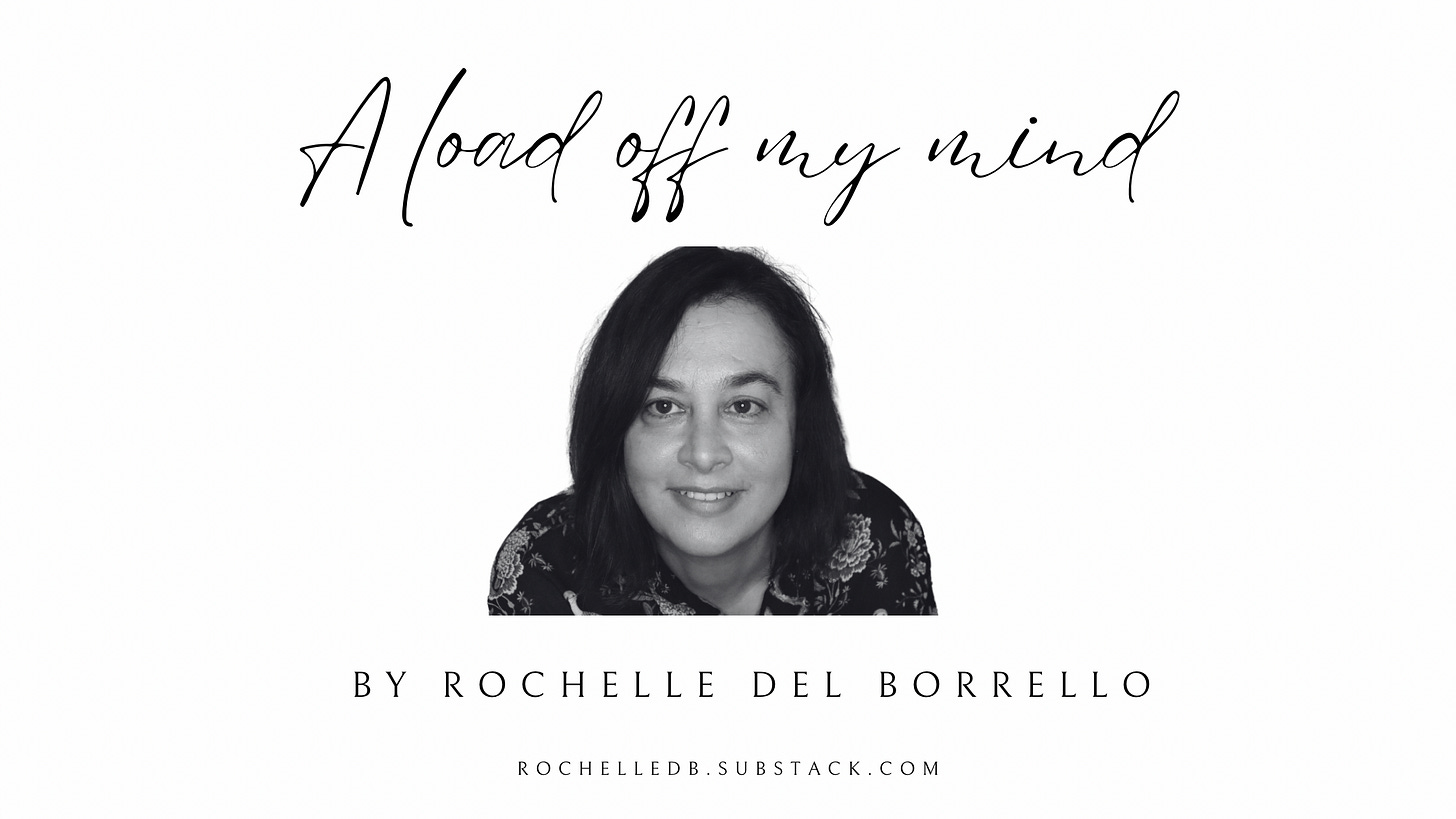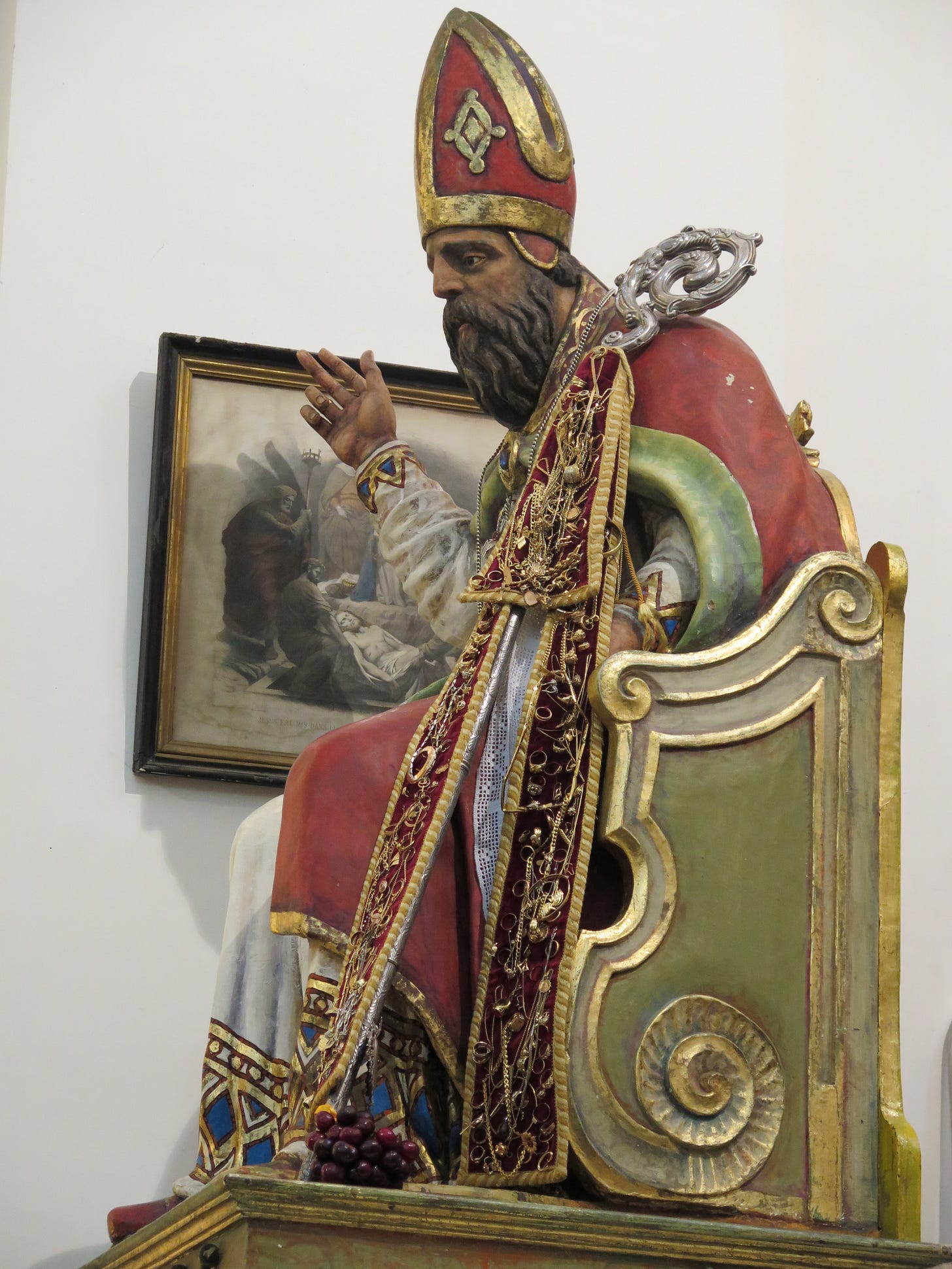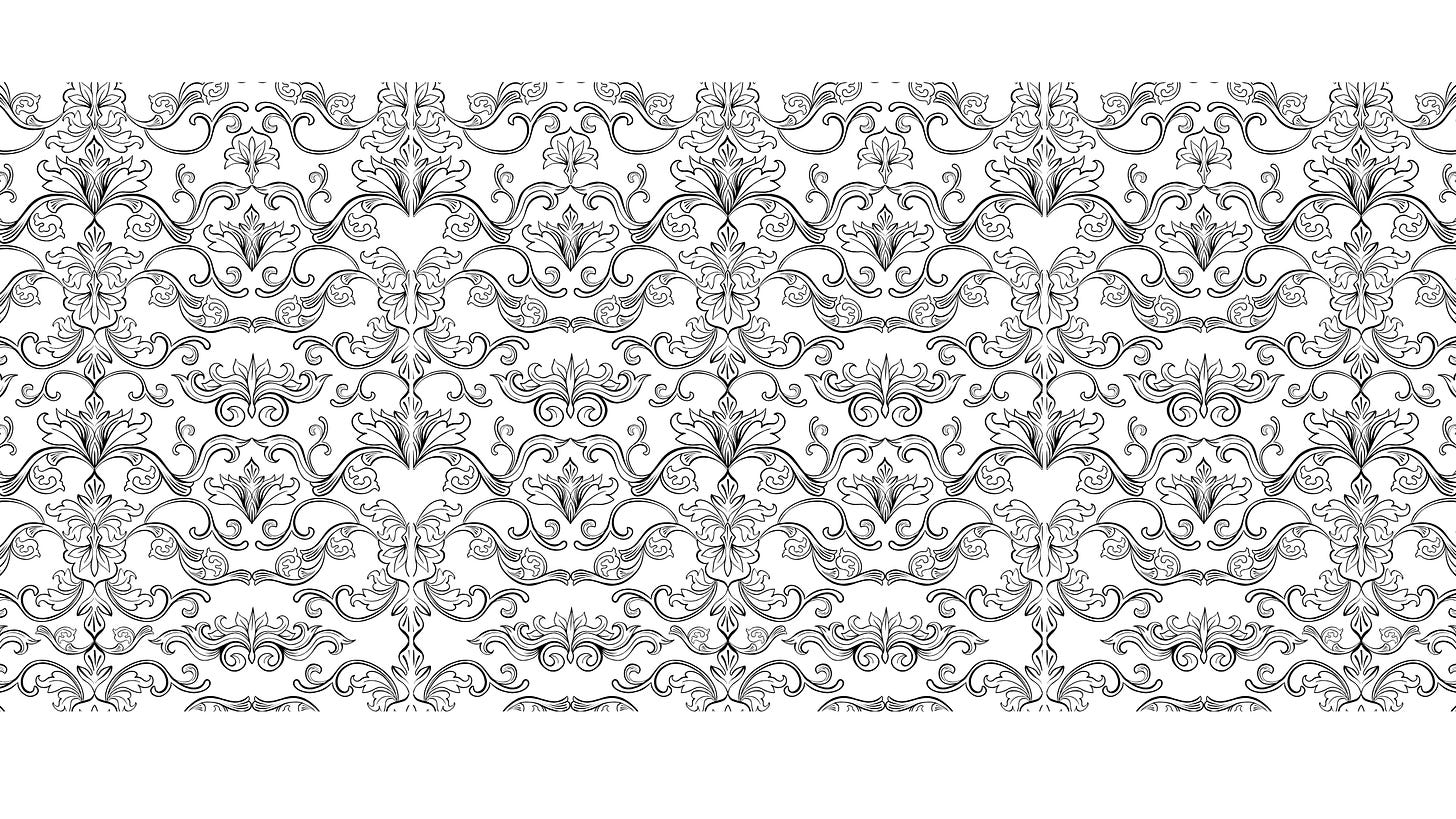Hello friend,
I love Sicily in the spring. Despite the crazy weather (hot Sirocco allergy-inducing filled days and comforter needing nighttime temperatures), it is truly a magical time of the year.
If I were a tourist again, I would come to Sicily in April and May to enjoy the sunshine and experience the country's religiosity. This is all before the high season, which is filled with humidity, hellfire, heat, and the confusion of too many tourists (both Italian and foreign).
Many people have already embraced this idea, particularly this year, when the weather has been relatively mild.
Apart from the onset of great weather, Easter in Sicily is a time of pageantry and tradition that spectacularly showcases the island's history, culture, and costumes.
Santa Pasqua in Sicily is filled with ancient rites and traditions that are as colourful and variegated as the island.
The week leading up to Easter is brimming with religious celebrations, food preparations, processions, and parades. Each festival is part of an elaborate pageant that mixes religion and paganism in the festivities that mark the end of Winter and the rebirth of Spring.
Visiting any small town has its versions of the Sicilian religious traditions. The week begins with intricately woven palm fronds, which are blessed for Palm Sunday, reaching a dramatic climax with passionate performances and ends with the consumption of delicate marzipan sculptured lambs or picureddi, bread or biscuits decorated with dyed eggs, many traditional dishes and endless desserts in the usual abundance of Sicily’s table.
If you are planning a trip to Sicilia specifically to experience the festivities, here is a list of the ten most spectacular celebrations on the island.
I Diavulazzi di Pasqua: Adrano, Catania
Easter at Adrano in the province of Catania is focused around the Diavolata, an ancient religious play performance.
Written in 1728 by a local religious brother, it is performed on the evening of Easter Sunday.
The Diavolata plays out the eternal battle between good and evil. The central part of the drama focuses on the struggle between several devils and St. Michael the Archangel, who not only defeats the evildoers but also gets them to praise God.
On the evening before Easter, there is the flight of the Angel, in which a terrified-looking adolescent girl is strapped in and hoisted along a tightrope across the local square to meet the statue of the freshly resurrected Christ and recites a piece of text welcoming and praising him.
Gli Incappucciati: Enna
Nineteenth-century German Romantic Johann Wolfgang von Goethe once said to have seen Italy without having seen Sicily is not to have seen Italy at all, for Sicily is the clue to everything.
But to understand Sicily, you must go to its geographical centre because the island’s true identity is there.
The province of Enna is known as the belly button of Sicily and is the home to Sicily’s most ancient traditions.
The sinister hooded Incappuciati are the central characters of Enna’s Easter celebrations, which date back to the Spanish period between the 15th and 17th centuries.
The males, who are only members of the fifteen various local confraternities, participate in a well-organised series of processions, prayers, and worship in the local Cathedral.
Pashkët: Piana degli Albanesi, Palermo
Easter takes on elements of the Greek Orthodox faith at Piana degli Albanesi and nearby towns in the Palermo region.
The celebrations are based on the ancient Byzantine church, and many of the rites performed are performed in Greek and Albanian.
The towns of Contessa Entellina, San Cristina Gela, Mezzojuso and Palazzo Adriano also share this particular ethnic characteristic in their Easter festivities. These towns' traditions reflect their history as an ancient colony of people from Albania, refugees from the Balkans who fled religious persecution during the Ottoman Empire in the late 15th century.
In 1482, after several attacks from the Ottomans, the Christian Albanians were forced to the Adriatic coast, where they hired ships from the Republic of Venice, escaped by sailing, and reached Sicily.
These refugees were eventually granted land in the mountains above Palermo, where they could maintain their Greek Orthodox religion and traditions without persecution. The religious rites for Easter at Piano degli Albanesi end with the Pontificale, a grand parade of women in elegant traditional dress which weaves its way through the town's main streets, stopping at the Cathedral.
At the end of the parade, white doves are released amid songs of the local dialect, and red-coloured eggs are distributed, symbolic of new life and the bloodshed during the crucifixion.
Il ballo dei diavoli: Prizzi, Palermo
At Prizzi in the province of Palermo, several devils and death themselves disturb the celebrations on Easter day with their macabre dance until other angelic characters eventually defeat them. The devils are dressed in one-piece red jumpsuits, with large round flat-faced masks complete with long fabric tongues, covered in goatskin and with a chain in their hands. In contrast, death is dressed in yellow with a crossbow in hand. It is a fascinating mixture of dance, paganism and religion, common in a Sicilian Easter celebration.
I Giudei: San Fratello, Messina
The apex of the grotesque characters in Sicily’s Santa Pasqua is the Giudei of San Fratello. The flocks of hooded, brightly dressed men take over the village and disturb the solemn funeral procession on the morning of Good Friday and other marches during the week.
These characters, with their colour, practical jokes, and loud trumpeting, come from Sicily's history. The costumes, handed down from father to son, are in a bright red pseudo-military style, with elaborate helmets, shiny yellow striped lapels, and intricate beading work. These make them like living, breathing works of folk art echoing the vibrant designs of the traditional carretto Siciliano.
The Medieval Norman colony of San Fratello is the home to these strangely dressed men who gather out of the ether and tie together many strands of history. The deafening confusion they create seems frightening, but this uproar is life-affirming chaos.
This celebration has continued uninterrupted for generations, including during both world wars. Thanks to these Giudei, the Sanfratellani have been called ‘non-Catholics’ and ‘devils,’ yet these characters are a central part of San Fratello’s identity.
I misteri: Trapani
Trapani’s Misteri procession re-enacts scenes from the Passion of Christ, with a parade of detailed massive wooden statues depicting different scenes from this eternal story.
The celebration at Trapani is probably the most well-known of the Misteri-based festivities, which occur throughout the island, simply because of the statues' dimension and the incredibly emotive figures' incredible artistry.
The Misteri depicts Christ's passion and the symbolic elements associated with the story. Side by side with the artworks are objects like spears, hammers, and a crown of thorns in an extended religious metaphor, like an elaborate Mystery play from the Middle Ages.
The festivities in Trapani begin on the Tuesday after Palm Sunday with the procession of the Madonna of the Pieta’ known locally as the Massari. This artwork dates back to the sixteenth century and is displayed within an ornate golden frame. The canvas depicts Maria Addolorata, looking to her left on a dark background with many holy relics.
Gli archi di Pasqua: San Biagio Palatani, Agrigento
Apart from the religious and pagan elements of Easter, there is also an immense dedication to decoration and artistry.
At San Biagio Platani, the city’s streets are lined with elaborately constructed archways, domes, bells, and religious artworks.
In the months before Easter, the two major historical confraternities of San Biagio work to create a massive piece of public folk art.
They use only natural materials to decorate the streets with arches, all with religious and natural symbolism, like bamboo, weeping willow, asparagus, laurel leaves, rosemary, cereals, dates, and bread.
The series of decorated archways becomes increasingly elaborate as they reach the central part of the town. This becomes the focal point of the Easter Sunday procession, as the Madonna and the resurrected Christ meet precisely at the centre of the decorations.
Lu Signuri delle Fasci: Pietraperzia, Enna
One of the island's most elaborate and complex processions is that of Pietraperzia, near the island's centre, where the Signuri di li fasci creates an intricate liturgical performance.
On Good Friday, a traditional crucifix is fixed to a big log, and a complex series of linen strips are wrapped around its base.
The white strands are held by devout followers as the procession delicately makes its way through the streets, accompanied by prayers in the local dialect. The fabric strands are reminiscent of medieval Maypoles, but the performance is unique to Sicily.
Those who hold onto the forty-meter-long fabric strips usually ask for a miracle, thank God for divine intervention that has already occurred or maintain a family tradition.
The cavalcade is accompanied by the local confraternity in their hooded monk costumes, who carry the statue of the Madonna dell’Addolorata.
La Settimana Santa: Caltanissetta
Easter week at Caltanissetta is genuinely remarkable. From Palm Sunday to Easter Sunday, it is a week filled with elaborate performances, baroque processions, reenactments of the Last Supper, the stations of the cross, and traditional rites that reflect Sicily’s ancient and, at times, aristocratic past.
Palm Sunday sees the Processione of Gesù Nazareno, in which a statue of Christ is placed within an elaborate boat-shaped flower-decorated float and carried around the city in a recreation of Jesus’ triumphant arrival in Nazareth. On Easter Monday, there is a performance of the Last Supper.
On Wednesday, the Maestranza procession sees a parade of the city's local military, noble families, and artisan guilds in a blend of civil and religious elements. On the dark funeral day of Good Friday, while the city is in mourning, the Cristo Nero (or darkened Christ—because of its colour) becomes the focus of a profoundly religious procession.
La Corsa di San Leone: Sinagra, Messina
I cannot make up a list of suggestive Easter celebrations without mentioning my little Sicilian village, which combines the love of the local patron saint, San Leone, with the joy of Easter.
San Leone is taken on an elaborate procession from his country church of the same name to the main parish church of San Michele Arcangelo in the heart of the town. The large wooden statue is mounted on a massive wooden float carried by the Confraternity of San Leone.
When the Saint arrives at the bridge at the beginning of the town, the statue runs over it, accompanied by suggestive fireworks. The saint's running recalls one of his miracles.
While San Leone was the Bishop of Catania, he confronted a magician who claimed to be more powerful than God.
The Saint challenged him to a literal baptism of fire, which saw the magician burnt to death while Saint Leo remained unscathed by the flames of a bomb fire.
That’s all I have on my mind for now.
Thanks for reading along.
Stay well, be kind to everyone, including yourself, and we’ll speak again soon.
Rochelle
Sometimes, I talk about Sicily.
Other times, I talk about whatever is on my mind.
My writing is always about lightning, the mental load, and sharing my thoughts.
I hope you enjoy the randomness of A Load Off My Mind.
Please share this post with someone you think might enjoy it.
This newsletter takes a lot of work, and I’m committed to making it available to everyone. That’s only possible because people believe in subscribing to this project, making this piece accessible to all. So please consider becoming a subscriber to A Load off My Mind.
Thanks for reading. This is a hand-crafted, ad-free, AI-free, anti-algorithm newsletter made possible by the support of readers like you. If you want to help keep it going, please become a paid subscriber.
The work and research I put into this Substack Page are entirely reader-supported. If you enjoy my content and are not ready to become a paid subscriber, you can make a one-time donation here at Buy Me A Coffee.





